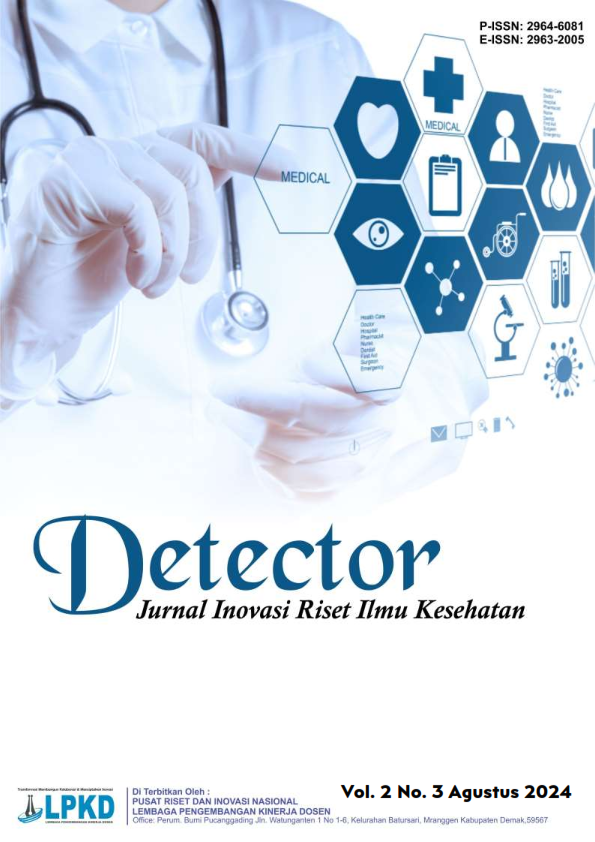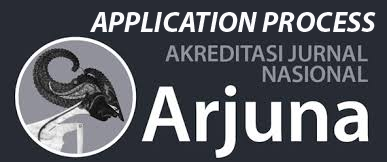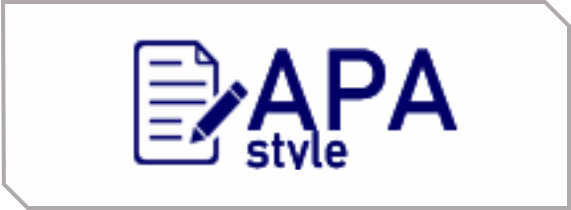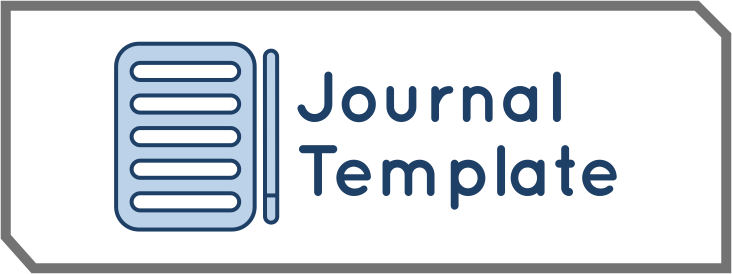Analysis of the National Formulary Drug Supply Chain with Its Availability in the Pharmacy Installation of the Government General Hospital (RSUP) Dr. Sitanala Tangerang City
DOI:
https://doi.org/10.55606/detector.v2i3.4151Keywords:
Pharmacy Management, Medicine Availability, Health Management, Supply ChainAbstract
This study explores the pharmaceutical supply chain management of the National Formulary at RSUP Dr. Sitanala in Tangerang City, aiming to identify obstacles to drug availability and formulate effective and efficient solutions. Acknowledging quality healthcare as a fundamental human right and a critical investment for a nation's future, this research emphasizes the importance of high-quality healthcare services. These services encompass not only treatment but also health promotion and disease prevention through the adoption of clean and healthy living habits. Drug availability is a major pillar in the provision of quality healthcare services. Effective and efficient management of the pharmaceutical supply chain, particularly regarding National Formulary drugs, is crucial in ensuring the availability of medications at healthcare facilities. This research employs a comprehensive analysis of the supply chain processes at RSUP Dr. Sitanala, examining stages such as drug selection, demand planning, procurement, receipt, storage, distribution, drug control, therapy monitoring, prescription preparation, drug dispensation, and medication administration. The study's methodology involves a case study approach, integrating theoretical management principles and interdisciplinary pharmacy management with compliance to regulations, as outlined in Permenkes No. 76 of 2016. Findings from RSUP Dr. Sitanala indicate that the hospital's pharmaceutical management practices align with contemporary health and pharmacy management theories, emphasizing structured systems, stringent verification, and effective interprofessional communication to ensure medication safety and efficacy. The study identifies challenges in information technology and interdisciplinary coordination as areas needing improvement. Nonetheless, a commitment to continuous improvement and adherence to regulatory standards reflects RSUP Dr. Sitanala's dedication to enhancing the quality of pharmaceutical management and healthcare services. The implications of this research extend beyond RSUP Dr. Sitanala, offering valuable recommendations for improving drug supply chain management in other healthcare institutions in Indonesia. By enhancing access to and the quality of healthcare services, this study contributes to the broader goal of achieving the highest possible level of health for individuals, reflecting the perspective of human rights and investment in the nation's future health.
Downloads
References
Afiya, N., Permadi, Y. W., Rahmatullah, S., & Ningrum, W. A. (2022). Analisis pengelolaan manajemen logistik obat di instalasi farmasi Rumah Sakit Qim Batang tahun 2021. Jurnal Ilmiah JOPHUS: Journal Of Pharmacy UMUS, 3(02), 138–145. https://doi.org/10.46772/jophus.v3i02.521
Arpan, U. (2022). Manajemen rantai pasok alat kesehatan di Rumah Sakit Umum Daerah Asy-Syifa’ Sumbawa Barat. Jurnal Tambora, 6(3), 126–135.
Arrang, S. T. (2023). Manajemen farmasi: Manajemen pengelolaan sediaan farmasi, alat kesehatan, dan medis habis pakai (BMHP). Penerbit Universitas Katolik Indonesia Atma Jaya.
Bachtiar, M. A. P., Germas, A., & Andarusito, N. (2019). Analisis pengelolaan obat di instalasi rawat inap Rumah Sakit Jantung Bina Waluya Jakarta Timur tahun 2019. Manajemen Dan Administrasi Rumah Sakit Indonesia (MARSI, 3(2), 119–130.
Bates, D. W., Cullen, D. J., Laird, N., et al. (2018). Incidence of adverse drug events and potential adverse drug events: Implications for prevention. JAMA, 274(1), 29–34.
Bates, D. W., Spell, N., Cullen, D. J., et al. (2009). The costs of adverse drug events in hospitalized patients. JAMA, 277(4), 307–311.
Christopher, M. (2005). Logistics and supply chain management: Creating value-adding networks. Pearson Education Limited.
Cipolle, R. J., Strand, L. M., & Morley, P. C. (2012). Pharmaceutical care practice: The patient-centered approach to medication management. McGraw-Hill Medical.
Flint, D. J. (2004). Strategic marketing in global supply chains: Four challenges. Industrial Marketing Management, 33(1), 45–50. https://doi.org/10.1016/j.indmarman.2003.08.009
Flynn, E. A., Barker, K. N., et al. (2012). The impact of the introduction of a standardized incident reporting system on the identification of medication errors in an acute care hospital. Drug Safety, 35(1), 37–45.
Handayany, G. H. (Ed.). (2022). Manajemen farmasi. Eureka Media Aksara.
Hugos, M. (2003). Essentials of supply chain management. John Wiley & Sons, Inc.
Indriana, Y. M., Darmawan, E. S., & Sjaaf, A. C. (2021). Analisis pengelolaan obat di instalasi farmasi RSUA tahun 2020. Promotif: Jurnal Kesehatan Masyarakat, 11(1), 10–19. https://doi.org/10.56338/pjkm.v11i1.1512
Iqbal, M. J., Geer, M. I., & Dar, P. A. (2016). Medicines management in hospitals: A supply chain perspective. Systematic Reviews in Pharmacy, 8(1), 80–85. https://doi.org/10.5530/srp.2017.1.14
Kemenkes RI. (2019a). Pedoman penyusunan rencana kebutuhan obat dan pengendalian persediaan obat di rumah sakit (D. J. K. dan A. Kesehatan, Ed.). Katalog Dalam Terbitan.
Kemenkes RI. (2019b). Petunjuk teknis standar pelayanan kefarmasian di rumah sakit (Vol. 21, Issue 1). Kemenkes RI.
Kemenperin. (2021). Membangun kemandirian industri farmasi nasional: Buku analisis pembangunan industri - Edisi II 2021. Kementerian Perindustrian RI.
Keputusan Menteri Kesehatan Republik Indonesia Nomor HK.01.07/Menkes/813/2019. (2019). Formularium Nasional (Vol. 561, Issue 3, pp. S2–S3).
Khan, S. A., & Khan, L. A. (2016). Best practices for management of pharmacy inventory. American Journal of Health-System Pharmacy, 73(11), 816–822.
Kshetri, N. (2018). Blockchain’s roles in meeting key supply chain management objectives. International Journal of Information Management, 39, 80–89. http://libres.uncg.edu/ir/uncg/f/N_Kshetri_Blockchains_Roles_2018.pdf
Kusumo, H., Solechan, A., & Marlina, D. (2022). Mengelola risiko pada manajemen rantai pasok (MRP) di industri farmasi. Journal of Management & Business, 5, 161–173.
Lambert, D., Cooper, M., & Pagh, J. (1998). Supply chain management: Implementing issues and research opportunities. International Journal of Logistics Management, 9(2), 1–18.
Leape, L. L., Bates, D. W., Cullen, D. J., et al. (2012). Systems analysis of adverse drug events. JAMA, 274(1), 35–43.
Li, L., Su, Q., & Chen, X. (2011). Ensuring supply chain quality performance through applying the SCOR model. International Journal of Production Research, 49(1), 33–57. https://doi.org/10.1080/00207543.2010.508934
Mailoor, R. J., Maramis, F. R. R., Mandagi, C. K. F., Kesehatan, F., Universitas, M., & Ratulangi, S. (2017). Analisis pengelolaan obat di Puskesmas Danowudu Kota Bitung. Fakultas Kesehatan Masyarakat, 1–14.
Manojlovich, M., Saint, S., & Meddings, J. (2016). Interprofessional communication in the ICU and error prevention. Journal of Patient Safety, 12(4), 187–191.
McLaughlin, C. P., & Kaluzny, A. D. (2017). Continuous quality improvement in health care: Theory, implementations, and applications. Jones & Bartlett Learning.
Mekonnen, A. B., McLachlan, A. J., & Brien, J. E. (2016). Pharmacy-led medication reconciliation programmes at hospital transitions: A systematic review and meta-analysis. Journal of Clinical Pharmacy and Therapeutics, 41(2), 128–144.
Mnushko, Z. (2016). Management and marketing in pharmacy: Textbook for foreign students of higher pharmaceutical schools. Kharkiv Publishing Center “Dialog.”
Musdar, T. A., Kurniawati, J., Musdalipah, Mardiati, N., Fitriah, R., Hadi, A. E. K., Sugihantoro, H., Razak, A., Puspasari, H., Kalsum, U., Bachri, N., Nurhikma, E., & Marwati, E. (2023). Manajemen farmasi rumah sakit. PT. Global Eksekutif Teknologi.
Nesi, G., & Kristin, E. (2018). Evaluasi perencanaan dan pengadaan obat di instalasi farmasi RSUD Kefamenanu Kabupaten Timor Tengah Utara. Jurnal Kebijakan Kesehatan Indonesia: JKKI, 7(04), 147–153.
Niazi, S. K. (2019). Handbook of pharmaceutical manufacturing formulations: Volume two, uncompressed solid products. CRC Press.
O'Leary, N. F., Ovretveit, J., et al. (2012). Quality of health care: Measuring quality in pharmacy. International Journal for Quality in Health Care, 24(6), 525–530.
Pedersen, C. A., Schneider, P. J., & Scheckelhoff, D. J. (2016). Improving patient safety through better medication management. Hospital Pharmacy, 51(3), 211–222.
Permatasari, E. S., Suliantoro, H., & Handayani, N. U. (2016). Analisis rantai pasok pada pengadaan obat di rumah sakit (studi kasus: RSu Puri Asih Salatiga). Jurnal Penelitian.
Permenkes RI Nomor 72 Tahun 2016. (2016). Standar pelayanan kefarmasian di rumah sakit: Vol. III (Issue 2, p. 2016).
Poudel, A., & Nissen, L. (2016). Telepharmacy: A pharmacist's perspective on the clinical benefits and challenges. Integrative Pharmacy Research and Practice, 5, 75–82.
Ratnawati, D. (2021). Analisis pengelolaan manajemen logistik obat di instalasi farmasi rumah sakit.
Rikomah, S. E. (2018). Farmasi rumah sakit. Deepublish.
Safitri, T. F., Permadi, Y. W., & Rahmatullah, S. (2021). Evaluasi perencanaan dan pengadaan obat di instalasi farmasi Rumah Sakit Mitra Siaga Kabupaten Tegal. Jurnal Ilmiah JOPHUS: Journal Of Pharmacy UMUS, 3(1), 46–53. https://doi.org/10.46772/jophus.v3i01.496
San, I. P., Batara, A. S., & Alwi, M. K. (2020). Pharmaceutical logistics management of the pharmacy installation, Faisal Islamic Hospital Makassar. PROMOTIF: Jurnal Kesehatan Masyarakat, 10(2), 78–85.
Saputra, Y. D. (2019). Manajemen farmasi untuk mahasiswa farmasi tenaga kefarmasian dan kalangan umum (Cetakan ke). Pustaka Baru Press.
Schneller, E. S., & Smeltzer, L. R. (2006). Strategic management of the health care supply chain. Jossey-Bass.
Septi, H. (2022). Evaluation of availability of pharmacy installation of Weda Regional General Hospital, Central Halmahera Regency. PHARMACON, 11.
Seto, S., Nita, Y., & Triana, L. (2015). Manajemen farmasi 2: Edisi 4: Lingkup apotek, farmasi rumah sakit, industri farmasi, pedagang besar farmasi. Airlangga University Press.
Setyawan, F. E. B., & Supriyanto, S. (2019). Manajemen rumah sakit. Zifatama Jawara.
Sugiyono. (2017). Metode penelitian kuantitatif, kualitatif, dan R&D. Alfabeta.
Sumriati, Sety, L. O. M., & Sudayasa, I. P. (2022). Manajemen pengelolaan obat di Dinas Kesehatan Kabupaten Buton Utara. Jurnal Ilmiah Obsgin, 14(4).
Vikaliana, R., Sofian, Y., Solihati, N., Adji, D. B., & Maulia, S. S. (2020). Manajemen persediaan. Media Sains Indonesia.
Vorst, J. G. A. J. van der. (2004). Supply chain management: Theory and practices. In Bridging theory and practice (pp. 105–128).
Walker, D., & Rowlinson, S. (2008). Procurement systems: A cross-industry perspective. Taylor & Francis Group.
Warella, S. Y., Hasibuan, A., Yudha, H. S., Sisca, Mardia, Kuswanti, S., Tumpu, M., Yanti, Tjahjana, D., & Prasetio, A. (2021). Manajemen rantai pasok. Yayasan Kita Menulis.
Downloads
Published
How to Cite
Issue
Section
License
Copyright (c) 2024 Detector: Jurnal Inovasi Riset Ilmu Kesehatan

This work is licensed under a Creative Commons Attribution-ShareAlike 4.0 International License.








